Introduction
The integration of the Industrial Internet of Things (IIoT) in healthcare is at the forefront of transforming patient care delivery, operational efficiency, and, most critically, enhancing the security and compliance of patient data. As healthcare systems increasingly adopt digital technologies, the volume of sensitive patient data being collected, processed, and stored has surged, elevating the importance of robust data security measures and strict compliance with regulatory standards.
The importance of data security and compliance in healthcare
Data security in healthcare is paramount due to the sensitive nature of patient information, which includes personal identification details, medical histories, and treatment records. The confidentiality, integrity, and availability of this data must be safeguarded to protect patient privacy, ensure trust in healthcare systems, and prevent potential financial fraud.
Compliance with regulatory frameworks such as the Health Insurance Portability and Accountability Act (HIPAA) in the United States and the General Data Protection Regulation (GDPR) in the European Union is equally crucial. These regulations set stringent guidelines for the handling of healthcare information, including how data is collected, used, and shared. They aim to protect patient rights while ensuring that data is handled securely and with the utmost care.
HIPAA, for instance, requires healthcare providers and their business associates to implement comprehensive security measures to protect health information, while GDPR mandates data protection by design and by default, giving individuals control over their personal data. Non compliance with these regulations can result in severe penalties, making adherence a top priority for healthcare organizations.
How IIoT Enhances Patient Data Security and Compliance
The IIoT brings together medical devices, applications, and healthcare IT systems in a connected ecosystem that offers new opportunities for enhancing data security and compliance. Here’s how this process works, delving into the technical details:
1. Data Encryption and Secure Transmission
IIoT devices and systems employ advanced encryption technologies to protect data at rest and in transit. Data encryption converts sensitive information into a coded format that can only be accessed with a decryption key, ensuring that patient data remains confidential and secure from unauthorized access during transmission over networks.
2. Access Control and Authentication
Robust access control mechanisms are a cornerstone of IIoT security, ensuring that only authorized users can access sensitive patient data. This includes the implementation of strong authentication protocols, such as two factor authentication (2FA) and biometric verification, to verify the identity of users accessing the system.
3. Data Integrity Checks
To maintain data integrity, IIoT systems utilize algorithms to detect any unauthorized modifications or tampering with patient data. These checks ensure that the information remains accurate and unaltered, preserving its reliability for clinical decisions and treatments.
4. Audit trails and monitoring
IIoT solutions facilitate comprehensive logging and monitoring of access to and actions performed on patient data. Audit trails record who accessed the data, what actions were taken, and when these activities occurred, providing a transparent record that supports compliance and aids in the investigation of any security incidents.
5. Compliance Management Tools
IIoT platforms can be equipped with tools designed to manage compliance more effectively. These tools automate the tracking and reporting of compliance metrics, ensuring that healthcare organizations adhere to regulatory requirements. They can alert administrators to potential compliance issues, helping to prevent breaches before they occur.
6. Network Security
Enhancing network security is crucial in an IIoT enabled healthcare environment. This involves the use of firewalls, intrusion detection and prevention systems (IDPS), and network segmentation to protect against external threats and minimize the risk of data breaches.
7. Resilient Architecture
IIoT systems in healthcare are designed with a resilient architecture that ensures continued operation and data protection even in the event of system failures or cyber attacks. This includes redundancy, failover mechanisms, and disaster recovery plans to maintain the availability and integrity of patient data.
Algorithms and technology used
Encryption Algorithms
AES (Advanced Encryption Standard): AES is a symmetric encryption algorithm widely used to secure data. It encrypts data in fixed block sizes (128, 192, or 256 bits) using cryptographic keys of corresponding lengths. AES is known for its speed and security, making it suitable for encrypting patient data both at rest and in transit.
RSA (Rivest Shamir Adleman): RSA is an asymmetric encryption algorithm that uses a pair of keys (a public key and a private key) for encryption and decryption. RSA is particularly useful for secure key exchange mechanisms in IIoT systems, ensuring that data can be securely shared between devices and systems.
Access Control and Authentication
OAuth 2.0: OAuth 2.0 is an authorization framework that allows third party services to exchange web resources on behalf of a user. It’s used in IIoT for secure API access, enabling devices and applications to access patient data securely without exposing user credentials.
LDAP (Lightweight Directory Access Protocol): LDAP is used for managing user access to network resources. In an IIoT context, LDAP can be utilized to authenticate users and devices, ensuring that only authorized entities can access sensitive patient data.
Data integrity checks
SHA (Secure Hash Algorithm): SHA is a set of cryptographic hash functions designed to ensure data integrity. SHA 256, a variant of SHA, generates an almost unique 256 bit (32 byte) hash value for data. It’s used to verify that patient data has not been altered, ensuring its accuracy and integrity.
Network Security
TLS (Transport Layer Security): TLS is a protocol that provides privacy and data integrity between two communicating applications. It’s the standard technology for keeping an internet connection secure and safeguarding any sensitive data that is being sent between two systems.
Firewalls and IDPS (Intrusion Detection and Prevention Systems): Firewalls control the incoming and outgoing network traffic based on predetermined security rules, while IDPS systems monitor network and system activities for malicious activities or policy violations. Together, they protect the network perimeter and internal processes from unauthorized access and cyber threats.
Compliance Management Tools
GRC (Governance, Risk Management, and Compliance) Software: GRC platforms help healthcare organizations manage policies, compliance checks, and risk assessments related to patient data security. These tools automate the monitoring and reporting processes, ensuring adherence to HIPAA, GDPR, and other regulatory standards.
Distributed Ledger Technology
Blockchain: Blockchain technology offers a secure, immutable ledger for recording transactions and tracking assets in a business network. In healthcare IIoT, blockchain can secure the exchange of patient data across devices and stakeholders, ensuring transparency, data integrity, and access control through smart contracts.
Machine learning algorithms
Anomaly Detection Algorithms: Machine learning models can be trained to detect anomalies in network traffic or user behaviour, which may indicate a security threat. Algorithms such as isolation forests, autoencoders, or one class SVM (Support Vector Machine) are used for this purpose, enhancing the detection of sophisticated cyber threats in real-time.
Case Study: Enhancing Patient Data Security and Compliance with IIoT in a Large Hospital Network
Implementation
1. Data Encryption and Secure Transmission
- Technology Used: Advanced Encryption Standard (AES) for encrypting patient data and Transport Layer Security (TLS) for securing data in transit.
- Outcome: Ensured that all patient data, whether at rest or being transmitted across the network, was encrypted and protected from unauthorized access.
2. Access Control and Authentication
- Technology Used: Lightweight Directory Access Protocol (LDAP) integrated with two factor authentication (2FA) mechanisms.
- Outcome: Strengthened the security framework by ensuring that only authorized personnel could access sensitive patient data based on predefined roles and permissions.
3. Data Integrity Checks
- Technology Used: Secure Hash Algorithm (SHA 256) for conducting data integrity checks.
- Outcome: Guaranteed the accuracy and integrity of patient data by implementing mechanisms to detect and alert on any unauthorized data modifications.
4. Network Security
- Technology Used: Next generation firewalls and Intrusion Detection and Prevention Systems (IDPS).
- Outcome: Enhanced network security by monitoring for and preventing unauthorized access and potential cybersecurity threats in real time.
5. Compliance Management Tools
- Technology Used: Governance, Risk Management, and Compliance (GRC) software.
- Outcome: Automated the monitoring and reporting of compliance with HIPAA and GDPR, ensuring that the hospital network met all regulatory requirements.
6. Distributed Ledger Technology
- Technology used: blockchain for secure patient data exchange.
- Outcome: Implemented a secure and transparent mechanism for exchanging patient data across the network, ensuring data integrity and access control through smart contracts.
Challenges and Solutions
- Integration with Legacy Systems: Integrating IIoT technologies with existing legacy systems was a significant challenge. The solution involved deploying middleware and APIs that facilitated seamless communication between old and new systems.
- Staff Training: The introduction of new technologies required comprehensive staff training. Customized training programs were developed to ensure all personnel were proficient in using the new systems securely and effectively.
- Regulatory Compliance: Keeping up with evolving regulations was a challenge. The hospital network established a dedicated compliance team to monitor regulatory changes and ensure that the IIoT framework was updated accordingly.
Results
The implementation of IIoT technologies significantly enhanced the security and compliance of patient data across the hospital network. The network experienced a notable reduction in security incidents, and compliance audits confirmed adherence to HIPAA and GDPR standards. Patient data was more secure, access controls were effectively managed, and the hospital network could confidently assure patients and stakeholders of the integrity and confidentiality of their data.
Conclusion
This case study demonstrates the transformative impact of IIoT technologies on enhancing patient data security and compliance in healthcare. By adopting a strategic approach to IIoT integration, healthcare organizations can address the complex challenges of data security and regulatory compliance, paving the way for safer, more efficient patient care delivery.



